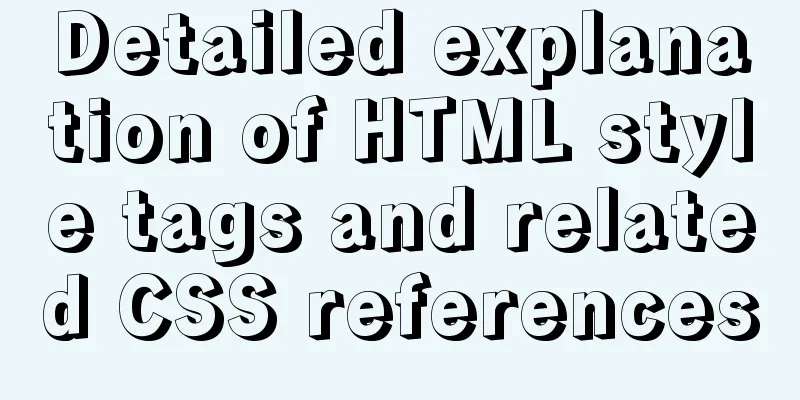5 MySQL GUI tools recommended to help you with database management

|
There are many database management tools for MySQL. What excellent GUI tools can help improve work efficiency? Take a look at these 5 MySQL GUI tools. 1. Navicat for MySQL Navicat for MySQL is a database management tool that is compatible with MySQL, MariaDB, and cloud databases. It is currently a very popular database front-end user interface tool. Available in up to 7 languages, Navicat is feature-rich and can help simplify the database development process and improve work efficiency when performing management tasks. However, this tool is paid and offers a 14-day free trial. What are the features and functions of Navicat for MySQL?
Download address: https://www.jb51.net/database/28395.html 2. phpMyAdmin phpMyAdmin is a web-based MySQL administration tool. The main reason for its popularity is that it is completely free. While it may not have the advanced features that other tools offer, the basic functionality can help create powerful websites and developers looking for a free tool should give it a try. Features of phpmyadmin PHP is a server-side scripting language for creating dynamic websites. You can use PHP and HTML to generate the homepage of your website. When a visitor opens the homepage, the server executes the PHP command and sends the execution result to the visitor's browser. This is similar to ASP and CoildFusion. However, the difference between PHP and them is that PHP is open source and cross-platform. PHP can run on WINDOWS and multiple versions of LINUX. It does not require any pre-processing and gives fast results, nor does it require mod_perl tuning to keep your server's memory footprint small. PHP consumes fewer resources. When PHP is part of the Apache Web server, running the code does not require calling external binary programs, and the server does not need to bear any additional burden. In addition to being able to manipulate your pages, PHP can also send HIIP headers. You can set cookies, manage digital signatures and redirect users, and it provides excellent connectivity to other databases (ODBC as well), integrating various external libraries to do anything from parsing XML with PDF documents. phpMyAdmin is a software tool written in PHP that can control and operate MySQL databases via the web. phpMyAdmin allows you to fully operate the database, such as creating, copying and deleting data. MySQL database management is fairly simple if you use the right tools. Using the MySQL command line method requires a very good understanding of MySQL knowledge, and the same is true for the SQL language. Moreover, if the database is heavily accessed, reading the data in the list will be quite difficult. There are many GUI MySQL client programs available, the most outstanding of which is the web-based phpMyAdmin tool. This is a PHP-based tool for MySQL database front-end. The disadvantage of PhpMyAdmin is that it must be installed on the web server, so without proper access rights, other users may be able to damage SQL data. Download address: https://www.jb51.net/codes/405261.html 3. dbForge Studio for MySQL This is a powerful GUI tool and an IDE. dbForge Studio provides rich code formatting capabilities, can create and execute queries, develop and debug storage, automate database object management, analyze table data through an intuitive interface, etc. And it supports MariaDB database, capable of creating result scripts for SELECT, INSERT, UPDATE and DELETE statements of SQL files with the help of CRUD generator. Software Features
Download address: https://www.jb51.net/database/570771.html 4. HeidiSQL HeidiSQL can be used to work with databases, including browsing or editing data, creating and modifying tables, managing user permissions, or other tasks. It can connect to a MySQL database via an SSH tunnel, allowing bulk inserts of ASCII and binary files into a table. Oh, and besides Windows, it also works with Linux distributions. Features
Download address: https://www.jb51.net/database/368550.html 5. Aqua Data Studio Aqua Data Studio is a general-purpose IDE for relational databases, cloud databases, and NoSQL databases. Its biggest feature is its excellent visual data analysis capabilities. You can visually build queries, model entity-relationship diagrams, edit data in an Excel-style grid, and perform other database development and management tasks. With the powerful visual analysis function of this tool, you can: create and share data visualizations; use open APIs to develop and debug scripts in a script development environment; view query execution plans and their statistics, etc. Function
Download address: https://www.jb51.net/database/581045.html The above are the details of 5 MySQL GUI tools recommended to help you with database management. For more information about 5 MySQL GUI tools, please pay attention to other related articles on 123WORDPRESS.COM! You may also be interested in:
|
<<: Linux parted disk partition implementation steps analysis
>>: Vue realizes dynamic progress bar effect
Recommend
MySQL SHOW PROCESSLIST assists in the entire process of troubleshooting
1. SHOW PROCESSLIST command SHOW PROCESSLIST show...
Problems encountered when updating the auto-increment primary key id in Mysql
Table of contents Why update the auto-increment i...
Detailed explanation of the construction and interface management of Docker private warehouse
1. About Registry The official Docker hub is a go...
Things You Don’t Know About the CSS ::before and ::after Pseudo-Elements
CSS has two pseudo-classes that are not commonly ...
HTML 5 Preview
<br />Original: http://www.alistapart.com/ar...
Docker container explains in detail how to simplify the image and reduce the size
Table of contents 1. Reduce the number of image l...
JavaScript+HTML to implement student information management system
Table of contents 1. Introduction 2. Rendering 3....
Detailed explanation of type protection in TypeScript
Table of contents Overview Type Assertions in syn...
MySQL full-text search usage examples
Table of contents 1. Environmental Preparation 2....
Detailed explanation of how to manually deploy a remote MySQL database in Linux
1. Install mysql Run the following command to upd...
Solution for using Baidu share on Https page
Since enabling https access for the entire site, ...
MySQL uses events to complete scheduled tasks
Events can specify the execution of SQL code once...
React useMemo and useCallback usage scenarios
Table of contents useMemo useCallback useMemo We ...
Detailed explanation of commonly used CSS styles (layout)
Compatible with new CSS3 properties In CSS3, we c...
Take you to understand the event scheduler EVENT in MySQL
The event scheduler in MySQL, EVENT, is also call...









